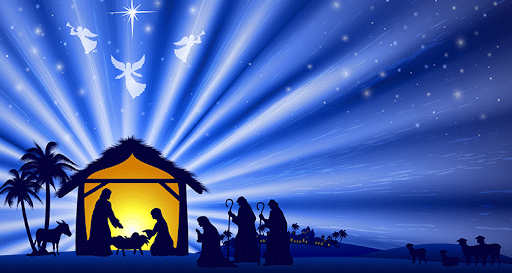What exactly is the history and origin of Christmas?
12. 5. 2024
What will you learn in this article?
The genesis and history of Christmas are subjects of enduring interest and inquiry.
Numerous questions arise about the origin of the most beautiful holiday of the year, such as when and how the first Christmas decorations were employed.
The seasonal imagery commonly associated with Christmas, including a decorated tree, gift-giving, festive meals, and assorted sweets and delicacies, has become firmly entrenched in the popular imagination.
However, the origins of this tradition are not immediately apparent and invite closer scrutiny. The solstice celebrations of our civilization’s pagan ancestors were inextricably linked with the festivities that we now associate with Christmas.
Our pagan forebears regarded December 21 and 22 as the most critical days, and their celebrations included a variety of ceremonies designed to confer abundance, health, and happiness in the coming year.
Christianity subsequently modified this earlier meaning, transforming Christmas into a celebration of the birth of Jesus Christ, with December 25 being the principal day of observance.
The celebrations continued until January 6. Thus, contemporary Christmas celebrations are characterized by a unique fusion of pagan and ecclesiastical symbols.
The complete history, origin, and beginning of Christmas are also excellently summarized in this document:
The origin of the word “Christmas.”
There are several theories about where the name came from.
Above all, there is talk of a connection with German, when the word Christmas comes from the word ” Weihnachten “, or of the old German phrase “zu den wihen nahten”, which translates as “on the sacred nights“.
Similar articles
History of Christmas in the USA
The history of Christmas in the United States is rich and diverse, reflecting various immigrant groups’ cultural influences and traditions’ evolution over time. Here’s an overview of the history of Christmas in the USA.
Overall, the history of Christmas in the USA is a dynamic narrative that reflects the country’s cultural mosaic and the evolution of traditions over centuries.
The history of Christmas in the USA is marked by:
- Colonial Period: Limited celebrations, some Puritan disapproval.
- 19th Century: Influences of German and Irish immigrants, popularization of Christmas tree and gift-giving.
- Victorian Era: Emphasis on family, sentimentality, and domesticity. Introduction of Christmas cards and elaborate decorations.
- 20th Century: Commercialization of Christmas, the rise of advertising. Popular culture (movies, music, TV) shapes traditions.
- Contemporary Christmas: Diverse and multicultural celebration, federal holiday.
Also, read our article about traditions and superstitions on Christmas Day. You will learn what interesting customs were used at Christmas and which we no longer see today.
What is the history of the Christmas tree?
The history of the Christmas tree is a fascinating journey that spans centuries and crosses cultural boundaries.
The history of the Christmas tree reflects the evolution and adaptation of traditions, with the tree becoming a cherished symbol that transcends cultural and religious boundaries.
The history of the Christmas tree is a fascinating journey that spans centuries and crosses cultural boundaries. Here’s a concise overview:
- Ancient Symbolism:
- The use of evergreen trees and branches during winter festivals has ancient roots. In various cultures, these symbols represented life, renewal, and hope during the darkest days of winter.
- Medieval Germany:
- The tradition of decorating evergreen trees indoors can be traced back to medieval Germany. Early records suggest trees were adorned with fruits, nuts, and other ornaments during winter celebrations.
- Renaissance and Protestant Reformation:
- By the 16th century, decorating trees had become more widespread, especially in areas influenced by the Renaissance and Protestant Reformation.
- England’s Introduction:
- Queen Charlotte, the German-born wife of King George III, is said to have introduced the Christmas tree to England in the late 18th century, although it did not gain immediate popularity.
- Queen Victoria and Prince Albert (19th Century):
- The widespread acceptance of the Christmas tree is often attributed to Queen Victoria and Prince Albert in 19th-century England. Illustrated reports of the royal family’s Christmas tree celebrations captured the public imagination and helped popularize the tradition.
- German Immigrants in the USA:
- German immigrants brought the Christmas tree tradition to the United States in the early 19th century. The practice gained broader acceptance in the 1850s, and decorating Christmas trees became a popular holiday custom.
- Electric Lights and Decorations:
- In the late 19th and early 20th centuries, the introduction of electric lights transformed how Christmas trees were decorated, replacing the earlier use of candles.
- Global Adoption:
- As cultural influences spread, the Christmas tree became a symbol of the holiday season in many parts of the world, each region adding its unique customs and decorations.
- Diversity of Decorations:
- Christmas tree decorations have evolved from simple fruits and nuts to various ornaments, lights, and tinsel. Different cultures contribute to the diversity of tree decorations.
- Contemporary Celebrations:
- Today, the Christmas tree is a universal symbol of the holiday season. From the traditional evergreen to modern artificial trees, decorating the tree is a cherished tradition for many families worldwide.





